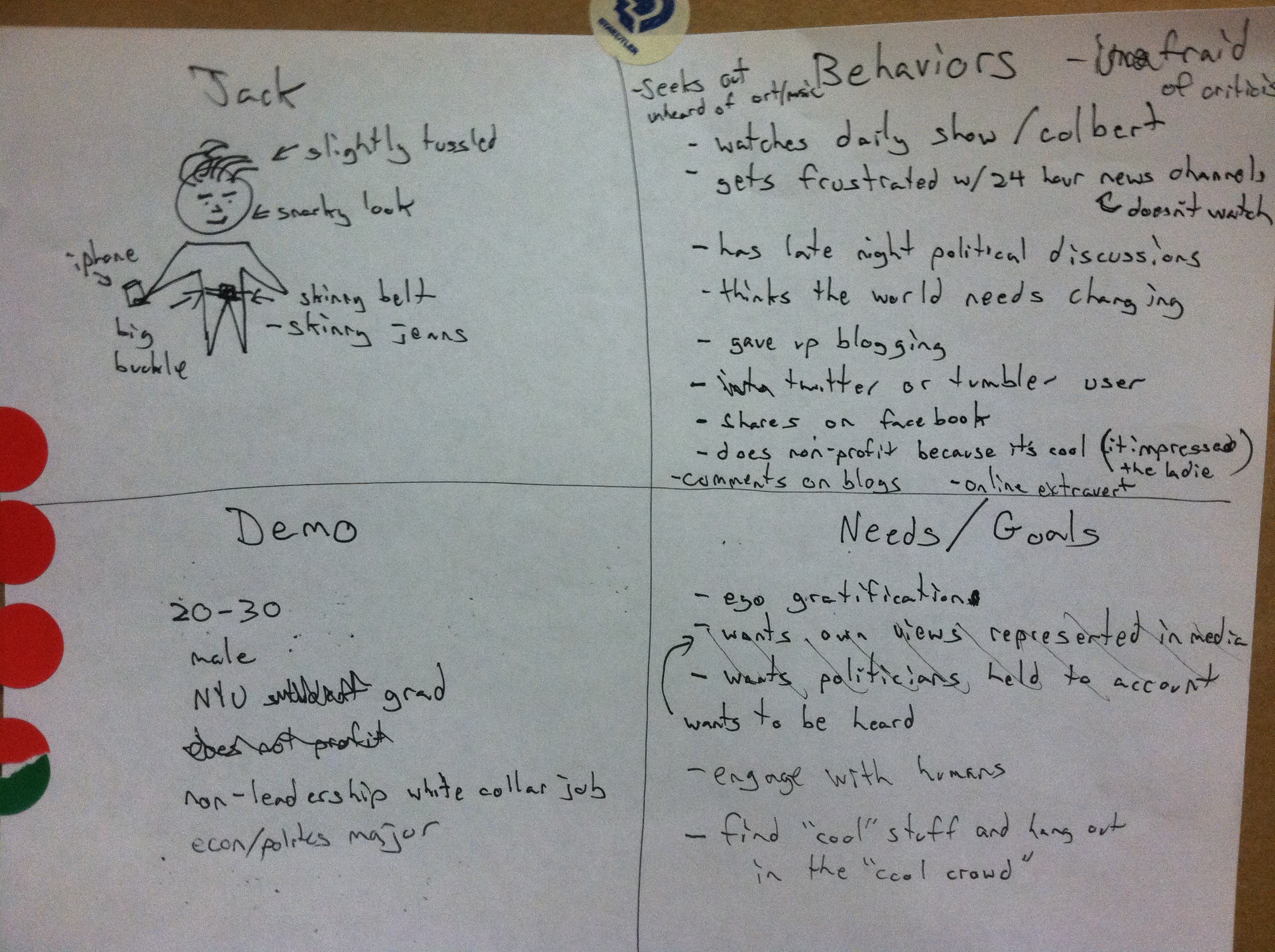Personas are what you should be doing as part of your customer and product development.
You’ve probably heard about them before, and you might have even seen a talk about how to draw silly little cartoons about your target customer.
You’ve also probably ignored them, then opened up excel and written down the demographics of your ideal customer segment in nice, tidy boxes.
You’re doing it wrong.
Customer personas are an amazing tool for doing customer development. They are the clearest form of hypothesis, test, and learn (a.k.a think, make, do to you designers out there a.k.a. build, measure, learn for you lean startupers out there.)
Here’s an example persona that I actually drew for MonkeyMake.it. Impressive stick figure drawing skills, right?

The key areas of a persona are:
- Picture (with name)
- Demographics
- Behaviors
- Goals
(Please note: There are other formats for personas with more detail. Tim McCoy uses a template from Cooper that is great. I’m sticking with the simple template I got from Janice Fraser at LUXr.co for now.)
Picture
The quality of the drawing doesn’t matter. It’s a mnemonic.
I’m sure a UX person will correct me on this, but I think the purpose of the picture is a mnemonic, nothing else. It really doesn’t matter how good your drawing skills are. You can do a collage from Flickr if you’d like. What matters is that it is memorable and distinct from all of your other brilliant stick figures and clothespin men.
Demographics
Demographics are pretty standard. Product managers don’t need to be convinced of their usefulness. Education, Age, Race, etc. All the good stuff that marketers like to have as a basis for targeting.

I think this is the least important quadrant to get right, but it does help you with your initial marketing efforts. After all, if you’re doing customer development, you’re going to need to find customers to talk to. Demographics will help you target ad campaigns to find a few signups. They’ll also help quickly rule people in or out as initial prospects when you’re out of the building.
Targeting teens? One look at your demographic hypotheses and you’ll notice that the bingo hall is probably the wrong place.
Goals
Goals are, of course, what everyone thinks they know, but probably has wrong. You think that your target customer is really frustrated with YouTube and just has to have your new video sharing service! (After all, it’s amazing.)
Ok…but why? Are they frustrated with YouTube?
- Is it because YouTube doesn’t highlight the fact that they’re the author? (ego gratification through attribution)
- Is it because the interface is clunky? (user wants to save time)
- Is it because they want to only see cat videos? (sexual deviant)
The goals you write are hypotheses, not facts. When you go out the door to do customer development, persona goals are the most critical things to validate.
Behaviors
The best behaviors to list are things related to how the persona solves the problem that they have.
I don't care if your persona 'Herbert' picks his nose unless you're trying to solve the problem of nasal congestion. Click To TweetListing problem solving behaviors will help you understand how the user thinks about solving their problems, what sort of solutions are already available to them, and what aspects of their current solution are unsatisfactory. If you do that right, it’s a complete listing of pain points, competition, and product requirements.
It’s also great to list behaviors that will help you identify Herbert. That way, if you run into someone picking their nose on the subway, then you can immediately recognize Herbert and start to ask him questions about his mucus viscosity.
Have fun with that conversation and remember to take notes (and potentially samples.)
Added benefit – Verbal shorthand
One of the side benefits of doing personas is that it makes discussing product / market fit or use cases much easier. Instead of a rambling conversation about an abstract “user” that no one really understands, you wind up with a two second exchange.
PM: I just interviewed three ‘Dave’s and all of them wanted the ability to let any ‘Jane’ upload a picture to the story without approving it.
Dev: Ah…I get it. Jane has already uploaded the pictures in her portfolio, so we just need a selection method here.
…and there’s more!
There are probably a dozen other benefits to personas, but you get the point. It’s a ten minute exercise which will take your entire customer and product development to the next level. Do it.
P.S.: If you want to learn more about personas, corner Janice Fraser and Tim McCoy and buy them a Belgian beer.
Are you trying to uncover your customer's pain points? Our three-week Get to Know Your Customers program shows you how to get maximum value from interviews, cultivate mutually beneficial relationships with your customers, and create value propositions that speak to your audience.
Click here to learn more →



